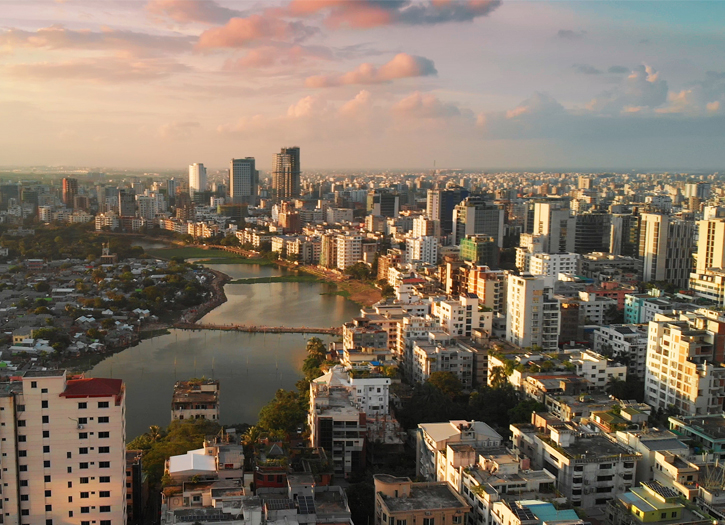On 8 March, the first three coronavirus cases were confirmed. They included two men that recently returned from Italy and a female relative. On the topic of easing the lockdown measures, Prime Minister Sheikh Hasina said “Economic activities have to be resumed for the sake of the lives and livelihoods of people.
On 23 March, when Bangladesh had 33 confirmed cases, the government declared a ten-day nationwide holiday for the period 26 March – 4 April, ordering all public and private offices to be closed, with the exception for emergency services. People have been asked to practice social distancing and stay at home. Public transport would be limited and advice was given to avoid them. The measure has been described as a “lockdown” by the media, albeit a “relaxed” one. The government asked the Army to ensure social distancing.The final set of restrictions on public movement were officially lifted on 1 September. These restrictions had included prohibiting movement outdoors from 10 PM to 5 AM, the closure of all shops, bazaars and malls after 8 PM .
Bangladesh has approximately 200,000 educational institutions across the country and over 40 million students.In March, Bangladesh closed all of its educational institutions in order to reduce the spread of COVID-19. Initially on 17 March, when Bangladesh had 8 confirmed cases, the government announced all schools would be closed for the remainder of March. Dhaka University was also closed for the same period.The Education Ministry announced an extension of the closures to April 9. However, with the situation not improving Dhaka University announced on 9 April it would remain closed indefinitely.With educational intuitions still closed by the end of April, Prime Minister Sheikh Hasina announced that they could remain closed until September 2020, unless the situation improves.
Dhaka University began online classes in July 2020, as have many other universities and schools. Experts and students have voiced concerns about accessibility to online classes for many students in Bangladesh; with poorer students, particularly in rural areas, lacking the devices and internet connectivity to participate in their classes.Some have suggested online classes will only further the “educational divide” whereby the most disadvantaged students (who usually attend public universities on scholarships) will fall behind their peers due to lack of accessibility.Standardised school examinations have been impacted by the school closures. The HSC exams, which were scheduled to held in April 2020, were postponed indefinitely.By August 2020 with schools still closed.
Some education experts wanted all the educational institutions of Bangladesh closed until November.Others wanted all the educational institutions in the country to reopen by October.The education experts said that all of the educational institutions in Bangladesh will reopen only either if the maximum growth rate of infections is 2% or if the minimum doubling period of infections is 30 days. They also said that all of the educational institutions in the country will reopen only if the coronavirus curve flattens or decreases. According to some education experts, all the educational institutions will reopen only either if the maximum number of daily or new cases is 3,000 .
Initially direct flights to the UK and China were exempted from the flight suspensions, but the UK was suspended in April too making China the sole exception.In the beginning of June, domestic flights resumed on limited scale. International flights resumed from Dhaka airport on 16 June 2020, with only Qatar Airways and Biman Bangladesh Airlines initially permitted to fly.Flights to and from the UK resumed on 21 June. On 24 June, flights to and from the UAE became operational via Emirates.Flights to and from Saudi Arabia resumed on 3 July. Nearly two weeks later, flights to and from Turkey resumed.
Domestic airline resumed operations from 1 June 2020, initially with very few passengers. The CAAB prescribed that all airlines have to keep at least 30 percent seats vacant on each flight to ensure social distancing by keeping a minimum gap of a seat between two passengers.On 13 September 2020 the restrictions on passenger seating were lifted, with only the requirement to leave two rows vacant for suspected COVID positive passengers remaining.







Add Comment